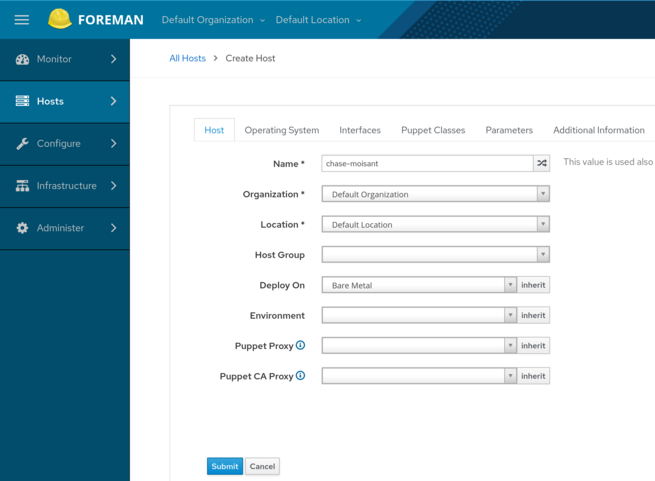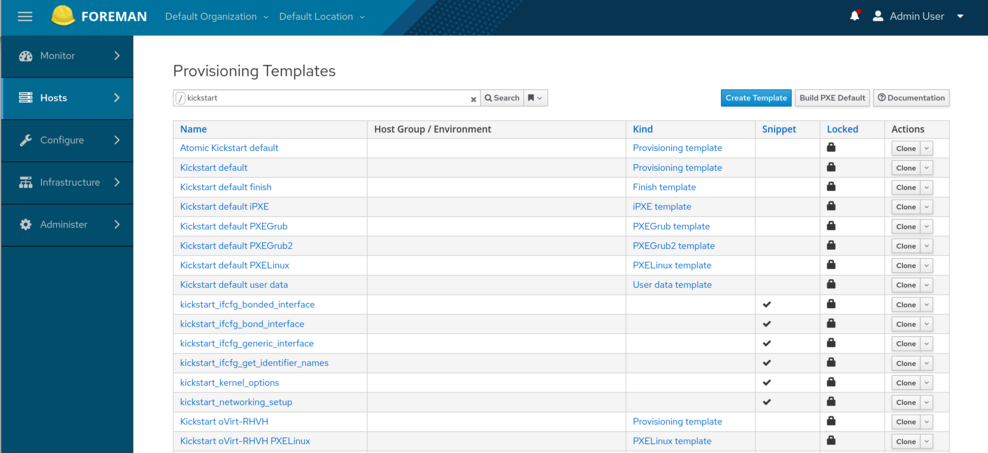As tests on Rock PI-X were successful, I ordered five other units. The Rock PIs come from China and even if shipping usually takes more than two weeks, it is more than time to prepare provisioning tools.
Because it is the Linux Distribution I’m the more used with for servers in production, I installed CentOS 8 on the management server of the minicluster. My goal is also to deploy CentOS on the nodes because, nowadays, it is one of the two distributions (with Ubuntu) on which there is the greater probability to find prepackaged or binary versions of infrastructure and container management tools. Which CentOS? Current CentOS 8 or CentOS Stream? For now it is CentOS Stream but more on that latter.
Initial plan was to use The Foreman. However, I stumbled on Alex Ellis’ “Awesome Baremetal” curated list of provisioning software and decide to have a look on other tools.
I chose to reuse cobbler, that I discovered almost ten years ago and which was then known to deploy Linux distributions from the “Red Hat Galaxy” (Fedora, RHEL, CentOS). At that time, I had mixed feelings: the tool was quite “raw”, with unpolished edges remaining, but usable. However, it was straightforward to install it on CentOS so it seems the right tool for my need. I followed the installation process, which begin by adding the EPEL repository. At that time, the next step is supposed to be:
sudo yum install --enablerepo=epel-testing cobblerThe command returns that there is no cobbler. What? I searched for cobbler package and there is none, even if associated tool koan is there. A tool so iconic of RedHat platforms is missing on CentOS 8? A quick test on a non CentOS Stream version gave the same result. Puzzling for a tool which is a foundation to use RedHat related distributions. The funny thing is that it seems support for other distribution, especially OpenSUSE, is better than CentOS.
Facing this situation, I decided to come back to initial choice. The Foreman is not a software for the faint of heart: it is a complex software architecture, with many components, hard to deploy manually. Luckily, the developers of the project provide Puppet scripts to automate installation. Let’s follow installation procedure!
After a few minutes, Puppet script spited an error message. OK, it is not hard to find that the script has trouble dealing with CentOS release number to find out which version of PostgreSQL to install. It is also easy to trick Puppet, for example by cheating with files like /etc/redhat-release, so that installation process goes to the end. But come-on: The Foreman is the tool for provisioning on RedHat related distributions, and now that Centos Stream is the flagship distribution for servers it does not work right out of the box?
Support of CentOS Stream is still on the way. Therefore, I decided to scratch everything and install the latest CentOS 8 version. This time, installation of The Foreman went smoothly and I can now access to the web interface:

Creating a host in The Foreman
I configured The Foreman as much as I could in order to use as soon as possible when Rock-PI X will be ready. I started from Foreman configuration. For those who just want an introduction, then the article of the HackMag gives an overview of how to install and use The Foreman.
As it will be a bare metal installation, I went into setup of The Foreman up to kickstart deployment templates.

